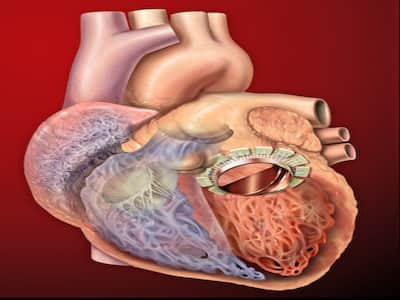
The “bridge” approach can significantly improve the patient’s chances of survival and this has helped many in safeguarding their life.
Bioartificial transplant is a need of an hour and it has increasingly made its space in this revolutionary world. Healthcare has progressively tried to revolutionize itself in many ways and technology has kept its strong hand on shaping the best for the future medicine. The aim of this article is to focus on the journey of the development of artificial organs and tissues in transplantation and regenerative medicine. Replacing organs is an alternative to give a new life to someone but the long waiting list and urgent needs have made it totally impossible to make the required arrangements needed for the organ transplantation. Research suggests that at least 12,000 Americans lie on the pending list for liver transplant. Hence this brings up the need to find a better alternative that can shorten the time on waiting list.
How Is It Done?
Researchers are putting significant efforts in engineering artificial organs like hearts, kidneys, livers, and lungs. These life-saving creations are brought to life through a combination of 3D bioprinting, tissue engineering, and cellular scaffolding. The methods used here involves carefully layering cells, scaffold materials, and bioactive molecules and then aim to replicate the complex structures and functions of natural organs. The ultimate goal is to address the persistent shortage of donor organs and mitigate the challenges of organ rejection.
There are some significant benefits of artificial organ and tissue implant!
Overcoming Organ Shortages
One of the primary benefits of organ transplant is that it reduces the shortages of organ transplant. It gives more options for the transplantation other than traditional organ transplantation that often faces limitations due to the scarcity of suitable organs from deceased or living donors. Artificial organs can be engineered using a patient’s own cells, eliminating the need for donors and reducing waiting times.
Customization Can Be Done
This may shed some light on how powerful the healthcare technology has become that now artificial organs can be tailor-made to suit the unique needs of each patient. This level of customization ensures a higher likelihood of compatibility and reduces the risk of organ rejection. By using the patient’s own cells, artificial organs can closely mimic the individual’s biological makeup, minimizing the chances of an immune response.
Less Risk Of Rejection
One of the significant concerns is the immune rejection in organ transplantation. But because the artificial organs are constructed from the patient’s own cells, the risk of rejection is significantly reduced. This reduces the need for immunosuppressive drugs, which can have serious side effects and compromise the patient’s overall health.
No Waiting List
Long waiting lists for donor organs can result in the loss of precious lives. Artificial organs have the potential to eliminate these waiting lists, providing patients with timely access to life-saving treatments. This can significantly improve patient outcomes and quality of life.
READ RELATED: Baasi Roti: 10 Health Benefits Of Stale Chapatis
Better Biocompatibility
Advances in biotechnology have led to the development of materials that closely resemble natural tissues. This improved biocompatibility ensures that artificial organs integrate seamlessly with the recipient’s body, reducing the risk of adverse reactions and complications.
Potential for Regeneration
Some artificial organs are designed to stimulate the body’s natural regenerative processes. These organs help in replacing lost functionality and also encourages the body to repair and regenerate damaged tissues. This helps in treating a wide range of degenerative diseases and injuries.
Bridge to Transplantation
With the help of the artificial organ transplantation one can go with the temporary solution instead of waiting for the suitable donors. This “bridge” approach can significantly improve the patient’s chances of survival and this has helped many in safeguarding their life.
Total Wellness is now just a click away.
Follow us on
Don’t Miss Out on the Latest Updates.
Subscribe to Our Newsletter Today!
window.addEventListener(‘load’, (event) => {
$(‘#commentbtn’).on(“click”,function(){
(function(d, s, id) { var js, fjs = d.getElementsByTagName(s)[0]; if (d.getElementById(id)) return; js = d.createElement(s); js.id = id; js.src = “//connect.facebook.net/en_US/sdk.js#xfbml=1&version=v2.3”; fjs.parentNode.insertBefore(js, fjs);}(document, ‘script’, ‘facebook-jssdk’));
$(“.cmntbox”).toggle();
});
});









